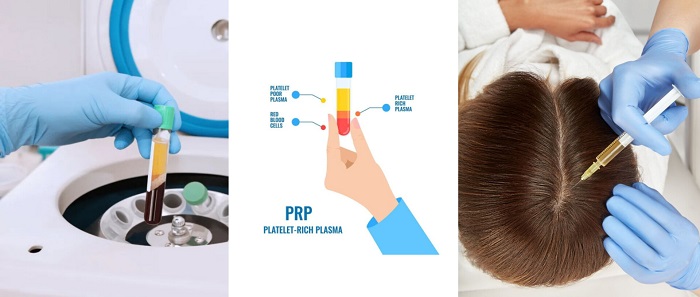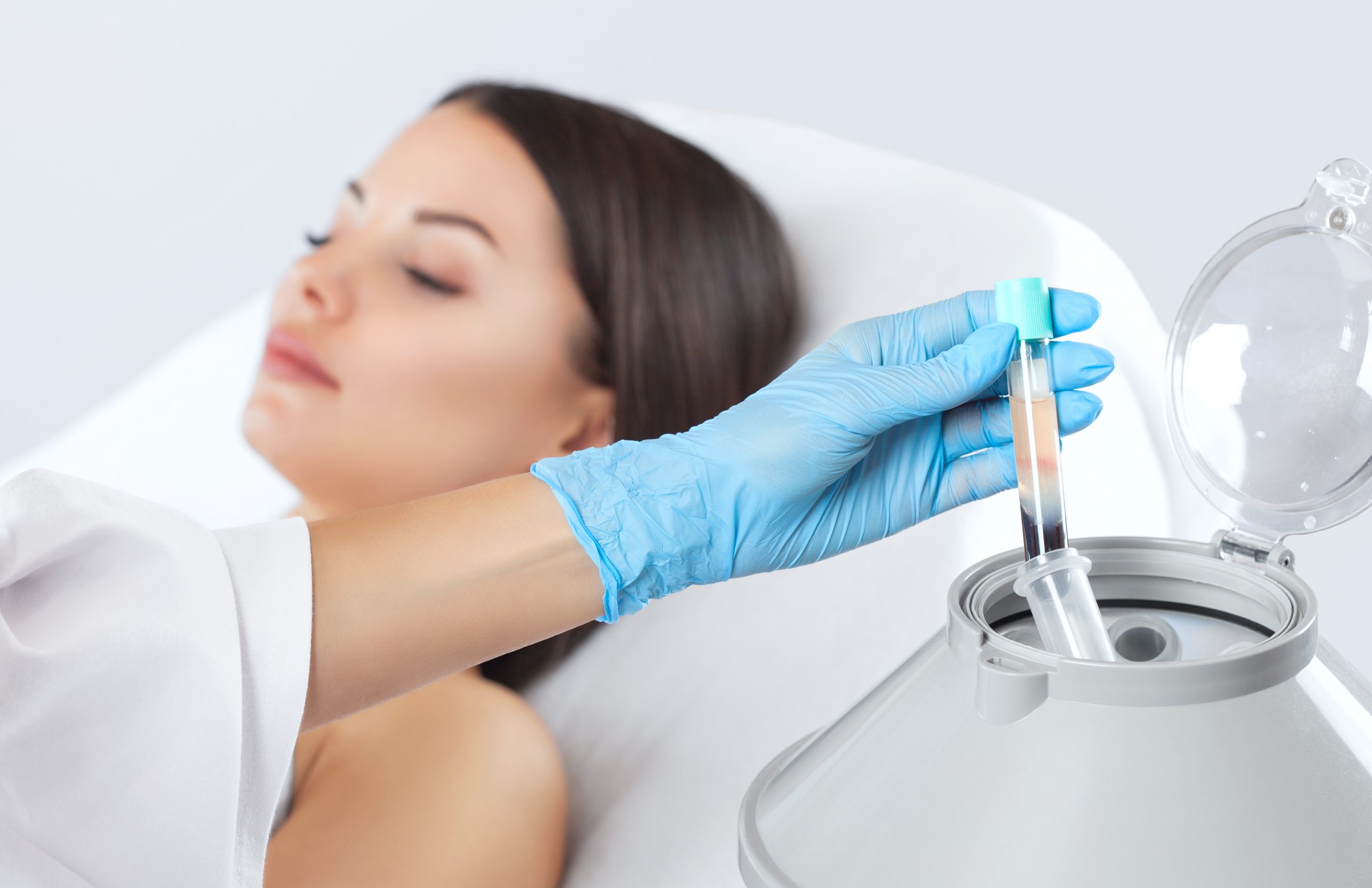
PRP (Platelet-Rich Plasma) injections have gained popularity for various concerns, from sports injuries to hair loss. This treatment uses a person's own blood plasma to accelerate healing in cases of skin spots, aging skin, hair loss, wound healing, joint injuries, and more. PRP can improve male pattern baldness, enhance the growth of transplanted hair, and be used alongside other cosmetic methods.
What is PRP?
PRP consists of two main components: plasma, the liquid part of blood, and platelets, a type of blood cell crucial for healing throughout the body. Platelets are known for their ability to clot blood and contain growth factors that can stimulate cell production, promoting tissue regeneration and repair in the treated area. In simpler terms, PRP is blood with a higher-than-normal concentration of platelets.
To create PRP, a blood sample is taken from the patient and placed in a centrifuge, a device that rapidly spins the sample to separate other blood components from the platelets, concentrating them in the plasma.
PRP for Hair Loss
This technique can enhance hair growth by stimulating hair follicles and improving the thickness and density of existing hair. PRP results are visible several weeks after joint injections and six months after scalp injections, but like many rejuvenation treatments, it is temporary. Patients might need repeat injections based on their doctor's recommendations. Given that this treatment uses the patient's own cells, PRP injections are considered safe and can be used alone or with other methods.

How is PRP (Platelet-Rich Plasma) Injection Performed?
After creating platelet-rich plasma from the patient's blood sample, the solution is injected into the desired area, such as an injured knee or tendon. In some cases, the doctor may use ultrasound to guide the injection. The goal is to increase the concentration of specific bioproteins or hormones, called growth factors, in a particular area to accelerate the healing process.
The mechanism behind PRP injections is not fully understood. Studies suggest that increasing the concentration of growth factors in platelet-rich plasma may stimulate or accelerate the healing process, shorten the healing time of injuries, reduce pain, and even enhance hair growth.
Initially, doctors used PRP to speed up healing after jaw surgery or plastic surgery. Now, PRP injections are used after surgery to help heal muscles, tendons, and ligaments because these tissues have a longer healing time.
Treating Tendon, Ligament, Muscle, and Joint Injuries
PRP injections can potentially treat a wide range of musculoskeletal injuries and conditions. For example, chronic tendon injuries like tennis elbow or runner's knee often take a long time to heal. Using PRP and a suitable treatment regimen can stimulate the healing process, reduce pain, and enable a quicker return to normal activities.